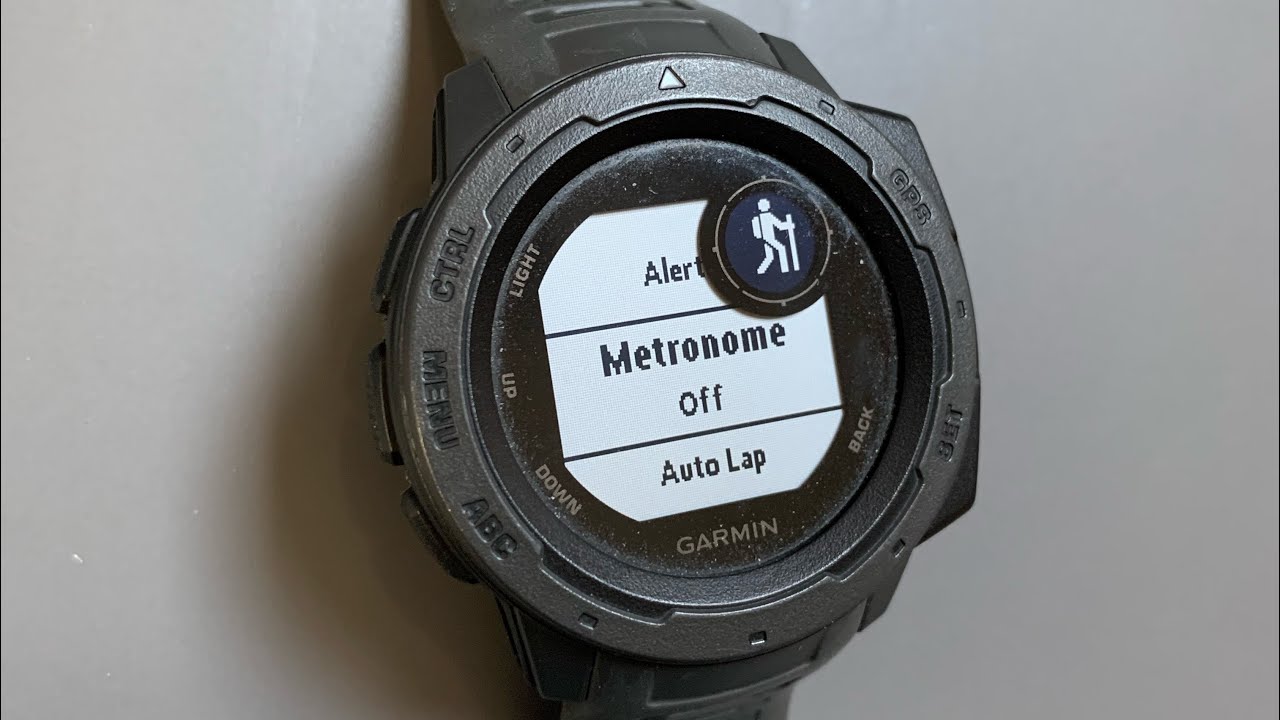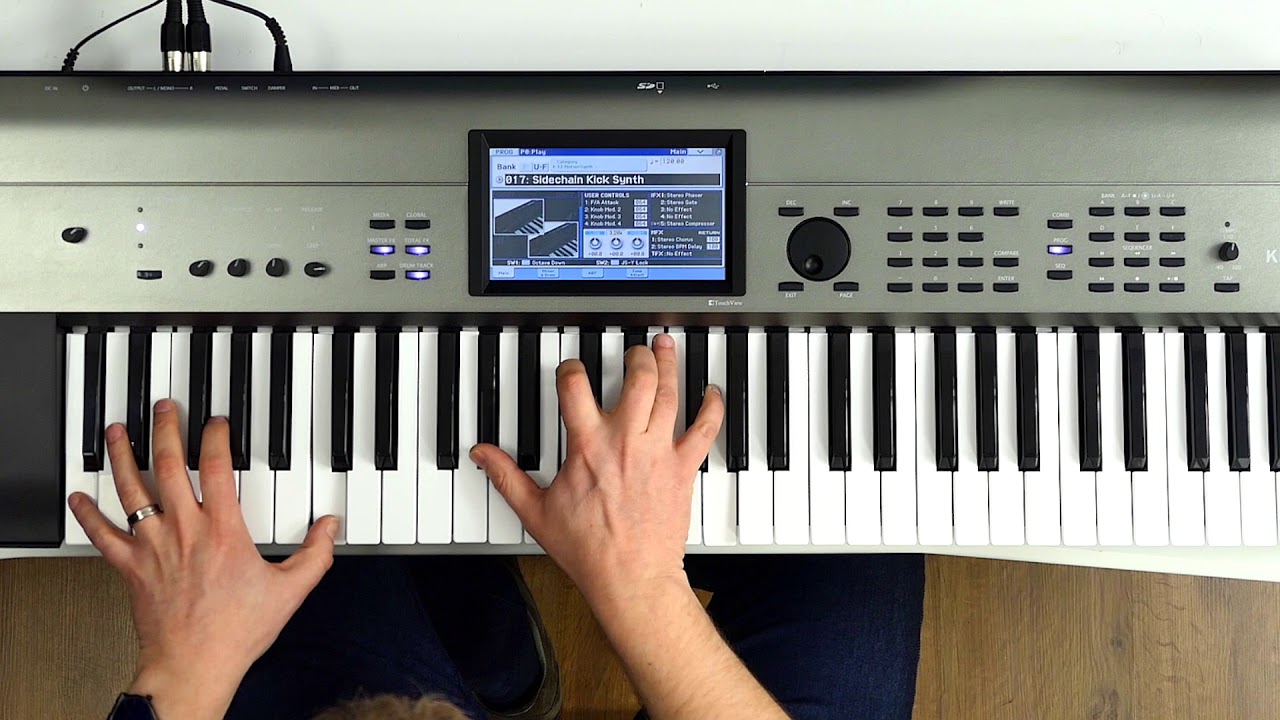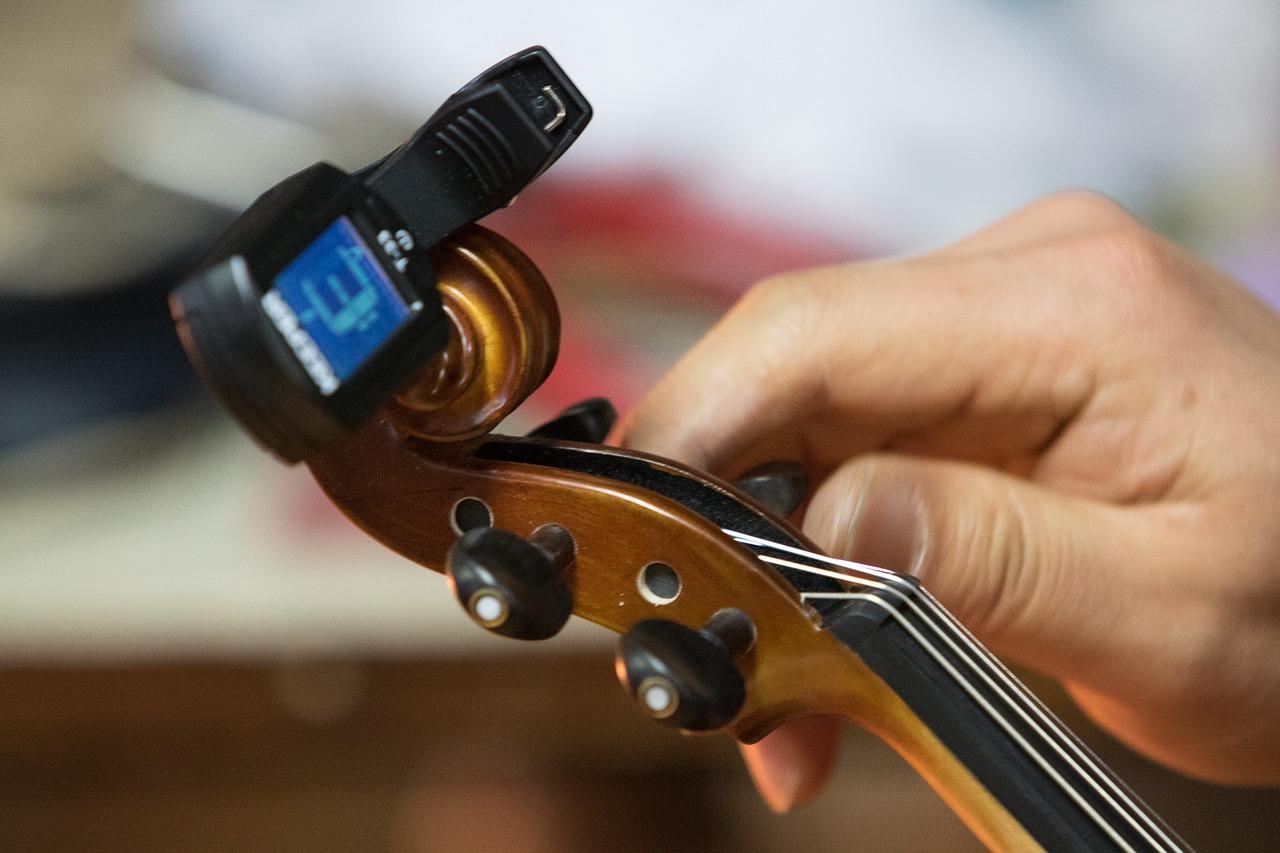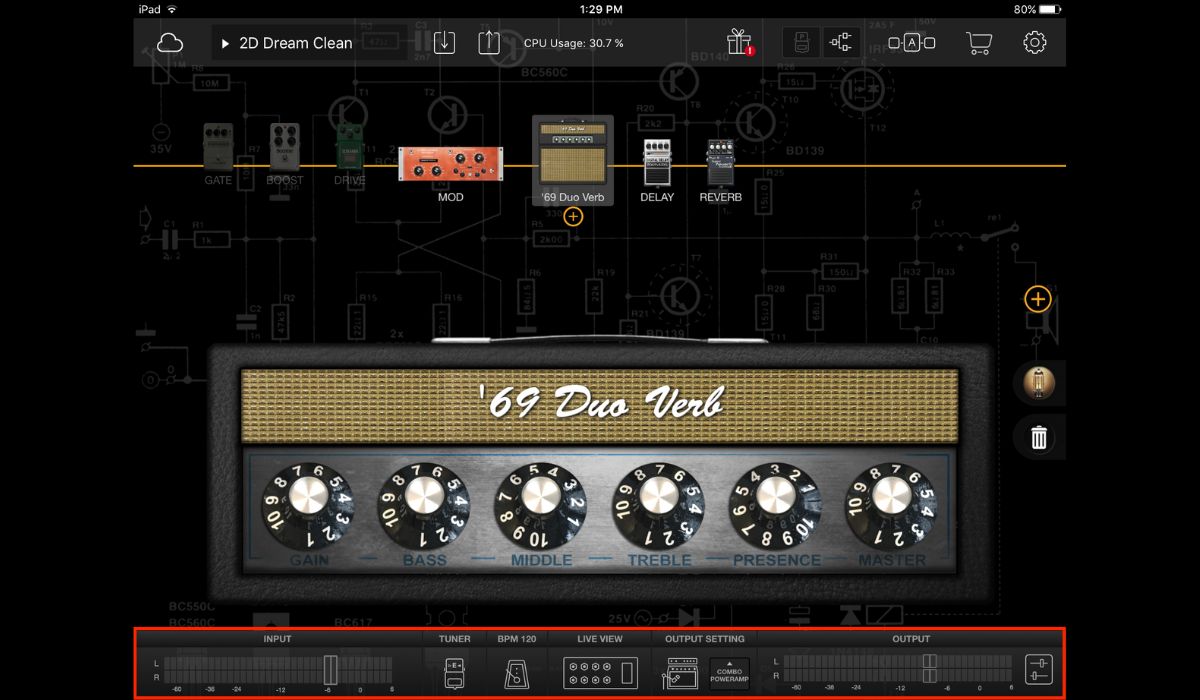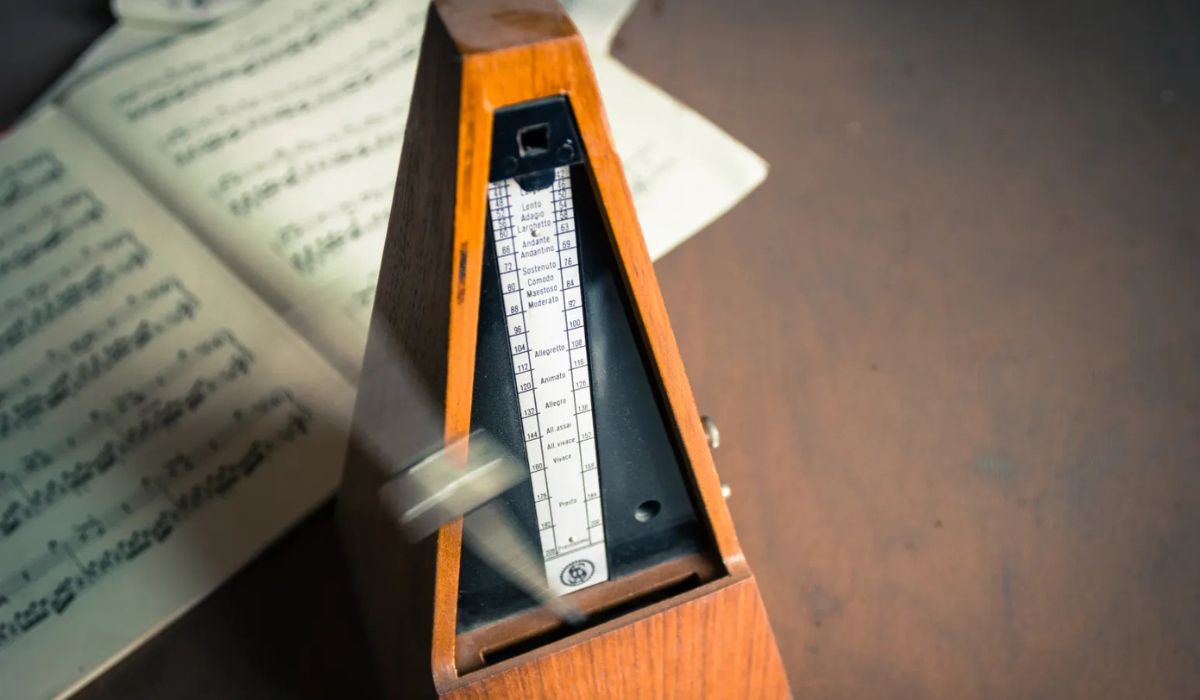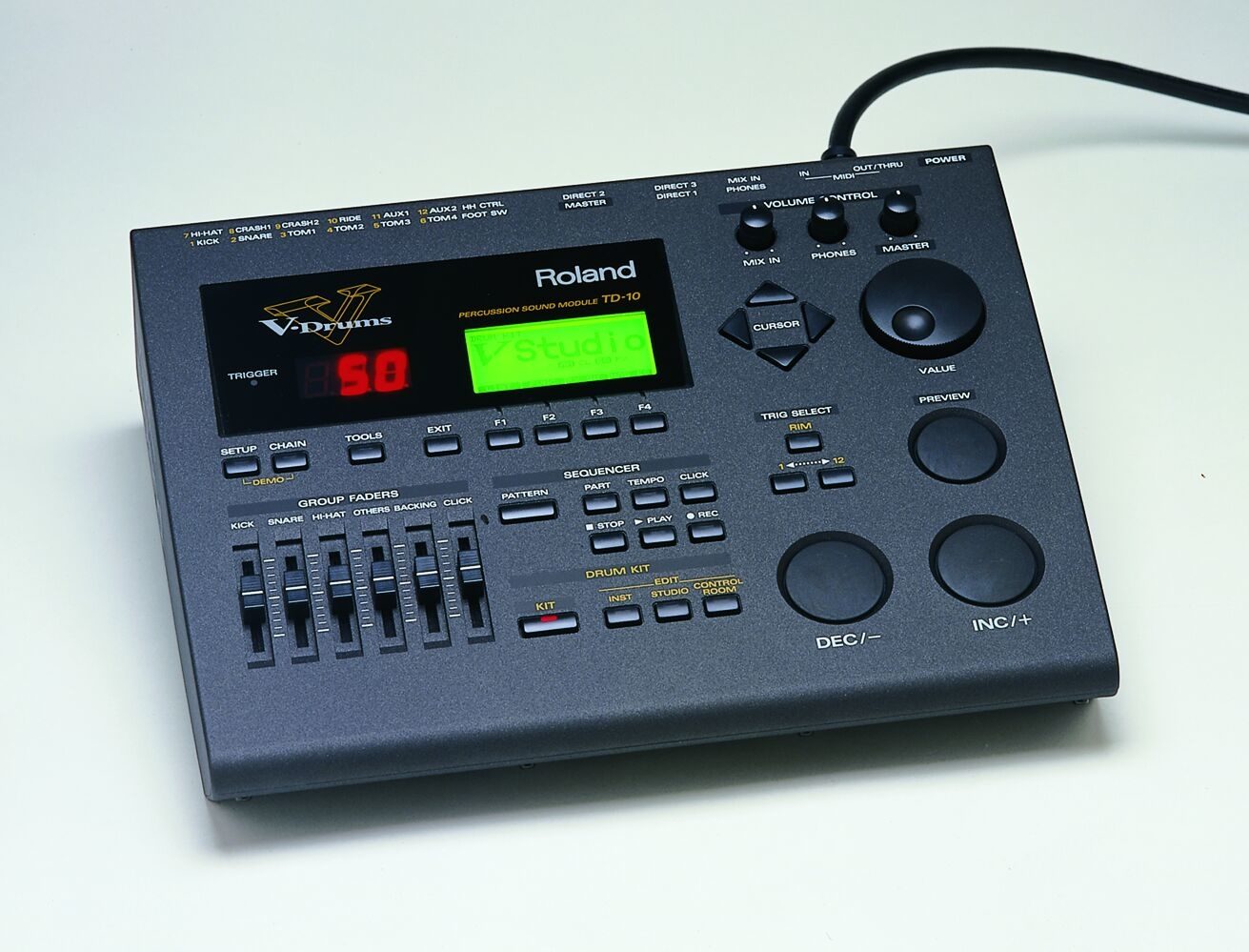Home>Production & Technology>Metronome>How To Use A Metronome For A Banjo
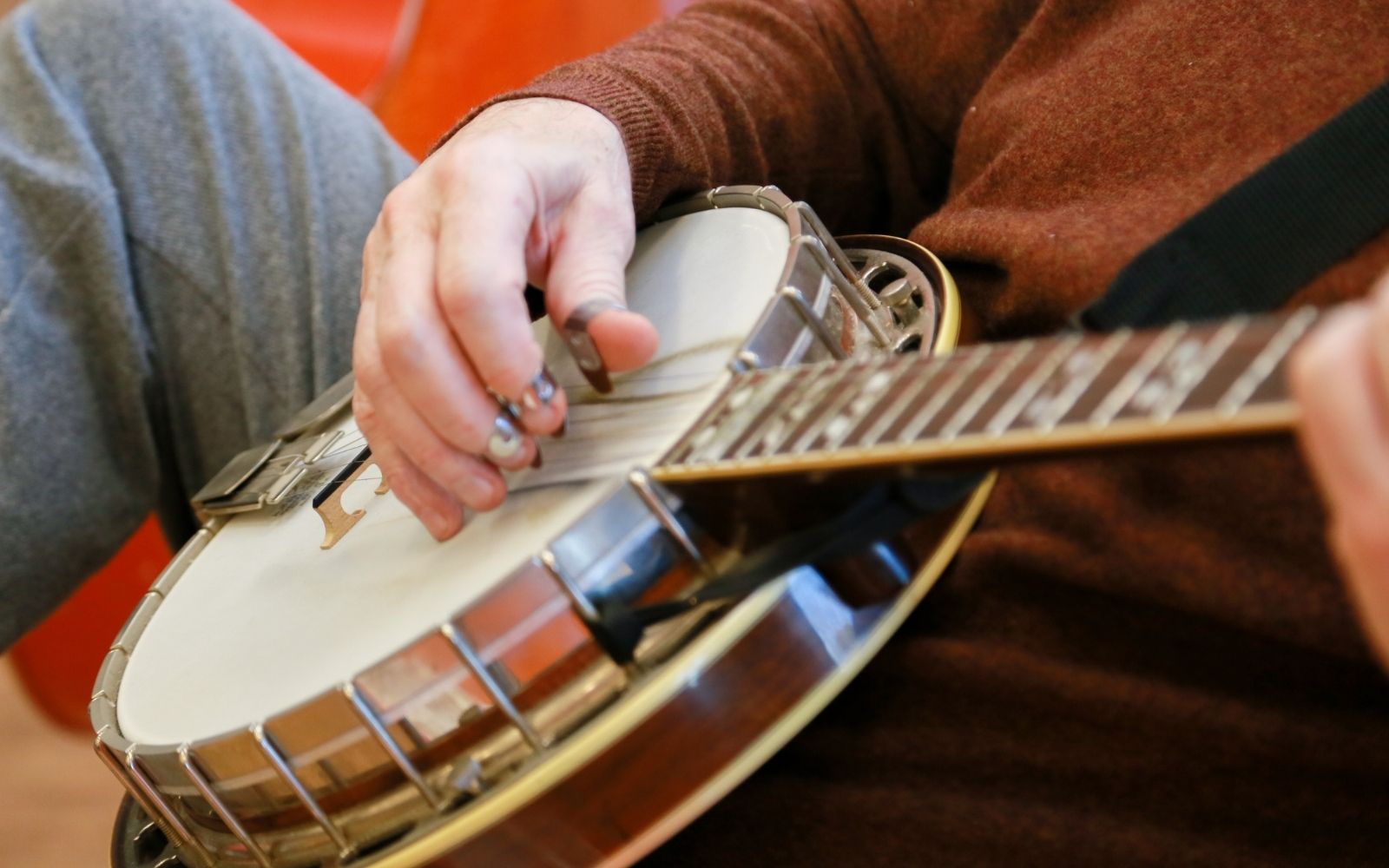

Metronome
How To Use A Metronome For A Banjo
Modified: January 22, 2024
Learn how to effectively use a metronome to improve your banjo playing skills. Boost your timing and tempo with this essential tool!
(Many of the links in this article redirect to a specific reviewed product. Your purchase of these products through affiliate links helps to generate commission for AudioLover.com, at no extra cost. Learn more)
Table of Contents
- Introduction
- Benefits of Using a Metronome for Banjo Playing
- Choosing the Right Metronome for Banjo
- Setting Up the Metronome
- Understanding Beats Per Minute (BPM)
- Using the Metronome for Basic Banjo Exercises
- Developing Timing and Rhythm with the Metronome
- Incorporating Different Time Signatures with the Metronome
- Practicing Advanced Banjo Techniques with the Metronome
- Tips and Tricks for Effective Metronome Practice
- Conclusion
Introduction
Welcome to the world of banjo playing! If you’re a beginner or an experienced player looking to improve your skills, one tool that can greatly benefit your banjo practice sessions is a metronome. A metronome is a device that helps musicians keep time by producing a steady beat at a specific tempo. While it may seem like a simple device, using a metronome can have a profound impact on your banjo playing.
Why is it important to use a metronome? Well, timing and rhythm are crucial elements in music, and the banjo is no exception. By practicing with a metronome, you can develop a strong sense of timing, improve your rhythm, and enhance your overall musicality. The metronome acts as a reliable reference point, helping you stay in sync and play with precision.
In this article, we will explore the benefits of using a metronome for banjo playing and guide you through the process of incorporating it into your practice routine effectively. From choosing the right metronome to understanding beats per minute (BPM) and utilizing different time signatures, we will cover all the essential aspects of using a metronome for banjo.
So, if you’re ready to take your banjo playing to the next level, let’s dive in and discover how the humble metronome can be a game-changer for your musical journey.
Benefits of Using a Metronome for Banjo Playing
Using a metronome can offer a myriad of benefits for banjo players of all skill levels. Here are some key advantages of incorporating this device into your practice sessions:
- Improves timing and rhythm: One of the primary benefits of using a metronome is that it helps you develop a strong sense of timing. Playing in time is crucial to creating a cohesive and enjoyable musical experience. The metronome provides a consistent beat, aiding you in maintaining a steady tempo and improving your rhythm accuracy.
- Builds technique and precision: When playing the banjo, precision is key. By practicing with a metronome, you can fine-tune your technique by ensuring that each note is played at the right time and with the correct duration. This will enhance the clarity and articulation of your playing.
- Enhances musicality: Playing with a metronome helps you develop a deep sense of musicality. It forces you to listen attentively to the beats and play in harmony with the rhythmic structure. As you become more comfortable with the metronome, you’ll find that your playing becomes more expressive and nuanced.
- Builds discipline and focus: Practicing with a metronome requires discipline and focus. It trains you to stay mentally and physically engaged with the music, as you must continuously align your playing with the steady beat of the metronome. This discipline will translate into other aspects of your musical journey.
- Aids in tempo control: The metronome allows you to practice at various tempos, helping you gradually build up speed and control. Whether you’re working on a slow, delicate piece or a fast-paced bluegrass tune, the metronome can assist you in developing the right tempo and maintaining consistency.
These are just a few of the many benefits of using a metronome for banjo playing. Whether you’re a beginner starting to navigate the world of banjo or an advanced player looking to refine your skills, incorporating a metronome into your practice routine can lead to significant improvements in your timing, rhythm, technique, and overall musicality.
Choosing the Right Metronome for Banjo
When it comes to choosing a metronome for banjo playing, there are a few factors to consider. Let’s explore some key points to help you find the right metronome for your needs:
- Analog or digital: One of the first decisions to make is whether you prefer an analog or digital metronome. Analog metronomes are traditional, mechanical devices that produce an audible click or tick. Digital metronomes, on the other hand, offer more features and flexibility, such as different sounds, visual indicators, and programmable settings. Consider your personal preferences and budget when deciding between the two.
- Tempo range: Check the tempo range of the metronome to ensure it covers a wide enough range for your playing style. Some metronomes offer a broader range, accommodating slower tempos for beginners and faster tempos for advanced players. Look for a metronome that can meet your current and future tempo needs.
- Sound options: Different metronomes provide various auditory choices for the beat sounds. Some offer simple clicks or ticks, while others may have bell-like tones or even drum patterns. Experiment with different sound options to find the one that suits your musical taste and helps keep you motivated during practice.
- Visual indicators: Visual indicators can be helpful, especially for players who prefer a visual cue rather than an audible one. Look for a metronome that provides clear and easy-to-read visual indicators, such as blinking lights or bouncing bars, to help you stay in time.
- Portability and durability: If you plan on practicing with your banjo outside of your home, consider the portability and durability of the metronome. Look for a compact and lightweight option that can withstand on-the-go use without compromising its function.
- Additional features: Some metronomes come with extra features, such as built-in tuners, rhythm patterns, or the ability to save tempo settings. While these features may not be essential for everyone, they could be beneficial depending on your specific needs and preferences.
Remember to consider your budget when selecting a metronome, as prices can vary. It’s also worth reading reviews and seeking recommendations from fellow banjo players to get insights into the reliability and functionality of different metronome models.
In the end, choosing the right metronome for your banjo playing is a personal decision that depends on your musical goals, budget, and individual preferences. Take your time, do some research, and consider these factors to find the metronome that suits you best.
Setting Up the Metronome
Once you have chosen the perfect metronome for your banjo playing, it’s important to set it up correctly to maximize its effectiveness. Here are some steps to get your metronome set up and ready to use:
- Select the desired tempo: Determine the tempo (or beats per minute) at which you want to practice. This will depend on the specific piece, exercise, or skill you are working on. Start with a comfortable tempo and gradually increase it as you become more proficient.
- Set the time signature: Choose the appropriate time signature for your banjo piece or exercise. Common time signatures in banjo music include 4/4 (common time), 3/4 (waltz time), and 2/4 (cut time). Make sure the metronome is set to the correct time signature to accurately match the rhythm you are playing.
- Decide on the sound: Select the type of sound you prefer for the metronome beat. Experiment with different sounds (clicks, beeps, or tones) and choose the one that is most pleasing and helpful to your playing style.
- Adjust the volume: Set the volume of the metronome to a level that is audible but not overpowering. You want the beat to be clearly audible, but not so loud that it distracts you from your playing or causes ear fatigue.
- Position the metronome: Place the metronome where you can easily see and hear it during your practice session. It could be on a music stand, table, or any other stable surface near your banjo. The goal is to have it within your line of sight and earshot without causing any physical interference.
- Start slow and build up: When you begin practicing with the metronome, start at a slower tempo to establish a solid foundation. Focus on playing accurately in time with the metronome’s beat. As you become more comfortable and confident, gradually increase the tempo to challenge yourself and improve your speed.
Remember that setting up the metronome is a personal process that may vary depending on your playing style and goals. Take the time to experiment with different settings and find the ones that work best for you.
By setting up your metronome properly, you can create a conducive practice environment that will help you stay focused, improve your timing, and develop a strong sense of rhythm on the banjo.
Understanding Beats Per Minute (BPM)
When using a metronome, one of the essential concepts to grasp is “beats per minute” (BPM). BPM refers to the speed or tempo at which a musical piece or exercise is played. Understanding BPM will allow you to effectively utilize the metronome and practice at the desired tempo. Here’s a breakdown of BPM and how it relates to your banjo playing:
BPM indicates the number of beats or pulses that occur within one minute. For example, if a piece has a BPM of 120, it means there are 120 beats in one minute, or 2 beats per second.
When practicing with a metronome, you will typically set the BPM to match the tempo of the piece or exercise you are working on. It is crucial to choose an appropriate BPM that aligns with your skill level and goals.
Here are some general guidelines for understanding BPM in relation to banjo playing:
- Slow Tempos: Slow tempos, typically ranging from 40 to 60 BPM, are ideal for beginners or when learning new techniques on the banjo. Playing at a slower tempo allows for better control and accuracy, enabling you to focus on the fundamentals of finger placement and picking patterns.
- Moderate Tempos: Moderate tempos, ranging from 60 to 120 BPM, are commonly used for practicing scales, exercises, and building dexterity. This range is suitable for refining your technique and developing a comfortable playing speed.
- Fast Tempos: Fast tempos, exceeding 120 BPM, are typically found in bluegrass and more advanced banjo playing styles. Practicing at faster tempos helps improve your speed, agility, and ability to play complex banjo rolls and licks.
It’s essential to gradually increase the tempo as you progress and become more comfortable playing at different speeds. Starting at a slow tempo and gradually working your way up will help you maintain control and precision while avoiding frustration or sacrificing accuracy.
Remember, the goal when practicing with a metronome is to align your playing with the steady beat it provides. By understanding BPM and selecting an appropriate tempo for your banjo practice, you can effectively utilize the metronome to improve your timing, rhythm, and overall musicality.
Using the Metronome for Basic Banjo Exercises
The metronome is a valuable tool for practicing basic banjo exercises and building a solid foundation for your playing. Here’s how you can utilize the metronome to enhance your skills:
- Playing scales: Scales are fundamental in banjo playing, and practicing them with a metronome can greatly improve your technique and timing. Start with a slow tempo and play each note of the scale in time with the metronome’s beat. Focus on maintaining an even rhythm and consistent timing as you ascend and descend the scale.
- Practicing chord changes: Smooth and seamless chord changes are crucial for banjo players. Set the metronome to a comfortable tempo and practice transitioning between different chords. Aim to change chords precisely on each beat, gradually increasing the tempo as you become more proficient.
- Working on rolls: Banjo rolls are an essential technique that adds texture and rhythm to your playing. Start by practicing rolls at a slow tempo and ensure that each note aligns with the metronome’s beat. Focus on playing the rolls accurately and cleanly, gradually increasing the tempo to challenge yourself and enhance your speed.
- Playing melodies: If you’re learning a banjo melody, use the metronome to help you stay in time and maintain a steady tempo. Set the metronome to match the tempo of the melody and play along, ensuring that your notes are synchronized with the metronome’s beat. This exercise will help develop your timing and ensure that you play the melody accurately.
- Improving strumming patterns: If you’re exploring strumming patterns on the banjo, the metronome can be a useful tool to improve your rhythm. Set the metronome to the desired tempo and practice strumming along with the beat. Focus on keeping your strumming hand consistent and in sync with the metronome, gradually increasing the complexity of the patterns as you progress.
Remember, the key to using the metronome for basic banjo exercises is to start at a comfortable tempo and gradually increase the speed as you gain proficiency. It is important to maintain accuracy, timing, and clarity in your playing, even as the tempo increases.
By incorporating the metronome into your practice routine for basic banjo exercises, you can significantly improve your technique, timing, and overall musicality. Embrace the discipline and focus that the metronome provides, and watch your playing skills soar to new heights.
Developing Timing and Rhythm with the Metronome
Timing and rhythm are essential elements in banjo playing, and the metronome is an invaluable tool for developing these skills. Here’s how you can use the metronome to enhance your timing and rhythm:
- Start with a slow tempo: When working on timing and rhythm, begin with a slower tempo on the metronome. This allows you to focus on playing each note or chord precisely in time with the metronome’s beat. As you become comfortable and accurate, gradually increase the tempo to further challenge yourself.
- Subdivide the beats: To improve your sense of timing, try subdividing the beats. For example, if you set the metronome to 60 BPM, you can mentally break it down into smaller subdivisions like eighth notes or sixteenth notes. This helps you develop a more precise internal rhythm and ensures that your playing aligns consistently with the subdivisions of the beat.
- Play with different subdivisions: Experiment with playing different rhythms and subdivisions in conjunction with the metronome. This could involve playing triplets, syncopated rhythms, or adding accents to specific beats. By varying your rhythmic patterns, you can expand your musical vocabulary and strengthen your overall sense of timing and rhythm.
- Challenge yourself with off-beat rhythms: Working on off-beat rhythms is an excellent way to develop your sense of syncopation and groove. Set the metronome to a moderate tempo and focus on playing notes or chords on the off-beats or upbeats. This exercise will help you internalize the underlying pulse while adding a dynamic flair to your playing.
- Experiment with different playing styles: The banjo is a versatile instrument with various playing styles, such as fingerpicking, clawhammer, or three-finger roll techniques. Use the metronome to explore these different styles and practice playing them with a steady rhythm. This will enhance your overall timing and help you incorporate rhythmic techniques specific to each playing style.
Consistency is key when developing timing and rhythm with the metronome. Focus on maintaining a steady pace, playing each note or chord precisely on the beat, and gradually increasing the tempo to push your limits.
Using the metronome regularly will not only improve your timing and rhythm on the banjo but also enhance your ability to play with other musicians in an ensemble or band setting. Practice consciously listening to the metronome while playing, ensuring that you stay locked in with its steady beat.
By dedicating time to developing your timing and rhythm with the metronome, you’ll build a solid musical foundation and become a more confident and expressive banjo player.
Incorporating Different Time Signatures with the Metronome
As a banjo player, it’s important to have a solid understanding of different time signatures and how they affect the rhythm and feel of a piece. The metronome is a valuable tool for practicing and internalizing these time signatures. Here’s how you can incorporate different time signatures with the metronome:
- Set the metronome to the desired time signature: Most metronomes allow you to adjust the time signature settings. Choose the appropriate time signature for the piece or exercise you’re working on. Common time signatures in banjo music include 4/4 (common time), 3/4 (waltz time), and 2/4 (cut time). Make sure the metronome is set to match the intended time signature.
- Play basic rhythms within the time signature: Start by playing basic rhythms within the chosen time signature. For example, in 4/4 time, you can play quarter notes, eighth notes, or a combination of both. Use the metronome’s beat as a reference point to ensure that you’re playing in sync with the designated time signature.
- Experiment with different subdivisions: Once you’re comfortable with the basic rhythms, experiment with different subdivisions within the time signature. For instance, you can play eighth note triplets, sixteenth notes, or dotted rhythms to add variety and complexity to your playing. The metronome will help you maintain a consistent rhythm and ensure that your subdivisions align with the beat.
- Practice changing time signatures: If you encounter sections in a piece of music that involve changing time signatures, using the metronome can be incredibly helpful. Set the metronome to the first time signature, and as you reach the section with a new time signature, mentally or physically switch the metronome settings to match. This will train your ability to transition smoothly between time signatures while staying in rhythm.
- Explore odd time signatures: Don’t be afraid to explore more complex and unconventional time signatures with the metronome. Time signatures like 5/4, 7/8, or 9/8 can add an interesting and unique flavor to your banjo playing. Set the metronome accordingly and practice playing different rhythms within these odd time signatures to develop your sense of timing and expand your musical repertoire.
By incorporating different time signatures with the metronome, you’ll develop a deeper understanding of rhythmic patterns and improve your ability to play with precision and accuracy. Remember to start at a comfortable tempo and gradually increase the speed as you become more proficient.
Using the metronome to practice different time signatures will not only enhance your banjo playing but also broaden your musical horizons, enabling you to play a wider range of styles and genres confidently. Embrace the challenge and enjoy the rhythmic exploration with the metronome as your trusted guide.
Practicing Advanced Banjo Techniques with the Metronome
As you progress in your banjo playing journey, you’ll encounter various advanced techniques that require precision, speed, and impeccable timing. The metronome is an invaluable tool for practicing and mastering these advanced banjo techniques. Here’s how you can incorporate the metronome into your practice sessions:
- Rolls and arpeggios: Rolls and arpeggios are essential banjo techniques that involve intricate fingerpicking patterns. Set the metronome to a comfortable tempo and practice playing rolls and arpeggios in time with the beat. Focus on maintaining a steady rhythm, accurate finger placement, and even note articulation as you develop speed and fluency.
- Chromatic runs: Chromatic runs involve playing a series of consecutive notes within a specific scale or position. Use the metronome to practice playing chromatic runs at a slow tempo, ensuring that each note aligns precisely with the metronome’s beat. Gradually increase the tempo as you gain control and agility, aiming for clean and fluid execution.
- Double stops and harmonies: Double stops and harmonies add depth and richness to your banjo playing. Set the metronome to a moderate tempo and practice playing double stops and harmonies in time with the beat. Pay close attention to the alignment of the intervals and strive for clean and synchronized execution.
- Banjo licks and solos: Practicing banjo licks and solos with the metronome is vital for developing improvisational skills and playing with precision. Set the metronome to the desired tempo and play through different licks or solo phrases, ensuring that each note fits accurately within the rhythmic framework provided by the metronome’s beat. Increase the tempo gradually as you become more comfortable and aim for seamless integration of the licks into your playing.
- Advanced rhythm patterns: Advanced rhythmic patterns, like syncopation or complex cross-rhythms, can be challenging to execute accurately. Practice these patterns with the metronome to develop a strong internal sense of timing and rhythmic stability. Start at a slower tempo and gradually increase the speed, paying attention to the placement of accents and syncopated notes in relation to the metronome’s beat.
Remember, consistency and precision are key when practicing advanced banjo techniques with the metronome. Start at a comfortable tempo and gradually increase the speed as you gain proficiency. Focus on playing with clarity, accuracy, and proper technique, using the metronome’s beat as a guide for maintaining a steady rhythm.
By incorporating the metronome into your practice routine for advanced banjo techniques, you’ll develop impeccable timing, improve your speed and accuracy, and elevate your overall performance. Embrace the challenge, stay focused, and let the metronome be your trusted companion on your journey towards banjo mastery.
Tips and Tricks for Effective Metronome Practice
Using a metronome effectively requires more than just setting the tempo and playing along. Here are some tips and tricks to make the most out of your metronome practice sessions:
- Start slow and gradually increase the tempo: When beginning a new piece or exercise, start at a slower tempo to focus on accuracy and technique. As you become comfortable, gradually increase the tempo to build speed and challenge yourself.
- Focus on precision and clarity: The metronome helps develop accuracy, so aim for clean and precise playing. Pay attention to proper finger placement, pick attack, and articulation of each note to ensure clarity in your playing.
- Experiment with different subdivisions: Use the metronome to explore different subdivisions like eighth notes, triplets, or sixteenth notes. This can help improve your rhythmic control and timing accuracy.
- Create a gradual tempo ramp-up: Instead of making sudden tempo changes, try utilizing gradual tempo ramp-ups. Increase the tempo in small increments over several practice sessions to build up speed gradually and maintain control.
- Practice with a variety of styles and genres: Employ the metronome in different musical styles and genres to enhance your versatility and adaptability as a banjo player. Whether it’s bluegrass, folk, or jazz, the metronome can help you develop a solid sense of timing and groove across various musical contexts.
- Record and review your practice sessions: Record your practice sessions with the metronome to review your progress and identify areas for improvement. Listen back to your recordings and evaluate your timing, rhythm, and overall musicality. This self-assessment can be instrumental in refining your playing.
- Experiment with different metronome sounds: Many digital metronomes offer a range of sound options. Try experimenting with different sounds (clicks, tones, or drum-like beats) to find the one that inspires and motivates you the most during practice.
- Practice with a metronome app or online tool: Utilize metronome apps or online tools that offer additional features like customizable rhythms, visual aids, and the ability to save progress. These tools can enhance your metronome practice experience and provide added flexibility.
- Don’t solely rely on the metronome: While the metronome is a powerful practice tool, it’s also important to practice without it. Work on developing your internal sense of timing by playing along with recordings or jamming with other musicians. This will allow you to adapt to different tempos and playing styles more organically.
Remember, the metronome is a tool to guide and improve your playing, but it should never replace the musicality and expression you bring to your banjo playing. Use it as a support to develop your timing and rhythm, and strive for a balance between technical precision and musicality.
With consistent and focused metronome practice, you’ll develop a strong sense of timing, improve your rhythm, and become a more confident and expressive banjo player. Embrace the process, enjoy the journey, and let the metronome be your faithful companion in your pursuit of musical excellence.
Conclusion
The metronome is a powerful tool that can greatly enhance your banjo playing. By incorporating it into your practice routine, you can improve your timing, rhythm, technique, and overall musicality. Whether you’re a beginner just starting to explore the banjo or an experienced player looking to refine your skills, the metronome can be a game-changer in your musical journey.
Throughout this article, we’ve explored the benefits of using a metronome for banjo playing. From developing a strong sense of timing and rhythm to incorporating different time signatures and practicing advanced techniques, the metronome serves as a trustworthy guide in honing your skills. By setting up the metronome correctly, understanding beats per minute (BPM), and utilizing it in combination with various banjo exercises, you can take your playing to new heights.
Remember, effective metronome practice requires patience, discipline, and consistency. Start slow and gradually increase the tempo, focusing on precision and clarity. Experiment with different subdivisions and styles to expand your musical repertoire. Record and review your practice sessions to track your progress. And don’t forget to practice without the metronome to develop your internal sense of timing and adaptability.
With time and dedication, you’ll find that the metronome becomes an invaluable tool in your banjo playing arsenal. It will guide you, challenge you, and push you to new levels of musicianship. Embrace the metronome as a partner in your banjo journey, and let its steady beat transform your playing.
So, pick up your banjo, set the tempo on your metronome, and let the rhythmic journey begin! Embrace the power of the metronome and watch as your banjo playing reaches new heights of precision, timing, and musical excellence.


